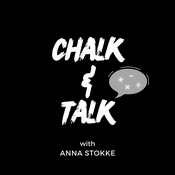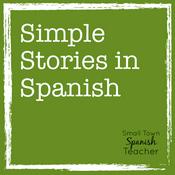I am GPTed - what you need to know about Chat GPT, Bard, Llama, and Artificial Intelligence

174 avsnitt

Unlock AI Superpowers: Master Prompting Techniques That Transform Robotic Responses
2026-1-10 | 4 min.
[Theme music fades in, then under]You’re listening to “I Am GPTed,” the show where we take artificial intelligence, remove the artificial confidence, and see what’s actually useful underneath. I’m Mal, the Misfit Master of AI. I break this stuff down in plain English, with just enough sarcasm to keep us all awake.Today we’re talking about one simple prompting technique that makes every AI you use—ChatGPT, Claude, Gemini, Grok, whatever—instantly less useless: **Show, then Tell.**Most people just *tell* the AI what they want. Pros **show an example first**, then tell it what to do.Here’s the “before” prompt:> “Write a professional email to a client about a project delay.”The AI will spit out something that sounds like it ate a corporate handbook and is now deeply ashamed of itself.Now the “after” prompt using Show, then Tell:> “Here’s an example of the tone and style I like: > ‘Hey Sarah, quick heads up on the timeline. We’ve hit a snag, but here’s what we’re doing about it…’ > > Using that same friendly, honest tone, write an email to a client about a one-week project delay because a key supplier missed their deadline. Keep it under 150 words.”Same task, totally different output. You gave:- an **example**- the **tone**- the **reason**- a **word limit**You showed, then told. The AI finally has some guardrails and can stop cosplaying as a 1990s fax machine.Let’s move to a practical use case you probably haven’t tried: **using AI as your “meeting translator.”**Next time you get a messy meeting transcript or a wall-of-text notes doc, paste it into your AI and say:> “You are my meeting translator. > 1) Summarize the discussion in 5 bullet points. > 2) List action items with owner and due date. > 3) Rewrite any vague tasks so a new hire would understand them.”Suddenly that 60‑minute chaos call becomes a clear to‑do list. No MBA required. No buzzwords harmed.Now, a common beginner mistake—one I absolutely made: **asking once, accepting whatever comes out.**I used to type a vague prompt, get a “meh” answer, and think, “Guess AI just isn’t that good.” No, Mal. **You** just weren’t that good.Treat the first answer as a **rough draft, not a verdict.** Follow up with:- “Make this shorter and more direct.” - “Add two concrete examples.” - “Rewrite this for a 12‑year‑old.” - “Give me three alternative versions with different tones.”The magic isn’t in the first prompt. It’s in the *back‑and‑forth*.Here’s a simple exercise to build that skill:1. Pick one small task: a text, email, social post, or explanation.2. Ask the AI to do it in your default lazy way.3. Then force yourself to ask **three follow‑up prompts**: - one to change tone - one to change length - one to add or remove detail4. Compare all four versions and pick the best parts.Do that daily for a week and you’ll be better than 90% of people using these tools. Low bar, yes. Still true.Finally, how do you **evaluate and improve** AI content so you’re not just copy‑pasting robot noise?Use this quick checklist:- **Clear?** Can a non‑expert understand it on the first read? If not: “Simplify this, remove jargon.”- **Concrete?** Does it use examples, steps, or specifics? If not: “Add 2–3 practical examples.”- **Correct?** Sense‑check facts against your own knowledge or a quick search. If shaky: “List your assumptions and uncertainties.”- **Concise?** If it feels like a TED Talk that won’t end: “Cut this by 50% without losing key points.”You’re not just consuming AI output—you’re **editing** it. Think of the AI as the overeager intern, and you’re the one with the red pen.Alright, that’s it for today on “I Am GPTed.” If this helped you wrangle your favorite AI into something vaguely useful, **subscribe to the podcast** so you don’t miss future episodes. **Thanks for listening.** This has been a **Quiet Please** production. You can learn more at **quietplease dot ai**.For more check out https://www.quietperiodplease.com/and for some great deals go to https://amzn.to/4nidg0PThis content was created in partnership and with the help of Artificial Intelligence AI

Unlock AI Mastery: Insider Prompting Secrets Revealed
2026-1-07 | 3 min.
**I Am GPTed** *Intro music fades in, upbeat quirky synth beat, fades out after 5 seconds.*Hey there, misfits and AI newbies, welcome to **I Am GPTed**, the show where I, Mal – your Misfit Master of AI – dish out practical tips on wrangling ChatGPT, Claude, Gemini, Grok, and whatever LLM the tech bros dream up next. No fluff, no hype, just stuff that actually works. I'm allergic to jargon, promise. Today? We're leveling up your AI game with one killer prompting trick, a sneaky everyday use case, my own epic fail, a quick practice drill, and how to spot AI garbage. Let's dive in – because who has time for theory when prompts pay the bills?First up: the **few-shot prompting** technique. It's like showing your kid a picture of a perfect sandwich before handing them the bread – gives the AI examples to nail what you want. Tech hype says it's "revolutionary," but nah, it's just common sense. **Before example:** I tell ChatGPT, "Write a product description for coffee beans." I get bland blah: "These beans are great for your morning brew." Yawn. **After:** "Write a product description like these two: Example 1: 'Wake up to volcanic fire – Ethiopian beans that punch harder than your alarm.' Example 2: 'Smooth as a lazy Sunday – Colombian gold for chill vibes only.' Now do one for Sumatran beans." Boom: "Sumatran beasts – earthy rumble that grabs your soul like a jungle vine." See? Examples turn generic mush into gold. Try it on Claude for emails – game-changer.Now, a practical use case you novices skip: **meal planning for picky eaters at work**. Not the sexy "code an app" stuff, but real life. Prompt Gemini: "Act as a fridge detective. I have chicken, rice, broccoli, soy sauce. Make 3 quick dinners for a kid who hates green bits, under 20 minutes." It spits out hidden-veggie fried rice hacks. Saved my sanity during remote work lunches – no more DoorDash doom-scrolling.Common beginner mistake? **Vague prompts, like "Make it better."** I did this for weeks, got the same crap looped back. Duh, Mal. Avoid it by always adding specifics: "Rewrite this email to sound confident but not bossy, cut 20% length, add a question." Boom, clarity.Quick exercise: Grab Grok. Prompt: "Give me 3 examples of bad job interview answers. Then critique one and rewrite it better." Do it twice weekly – builds your prompt muscle like reps at the gym, but without sweat.Last tip: Evaluating AI output? **Read aloud.** If it sounds like a robot wrote a TED Talk – choppy or hype-y – it's trash. Ask for a "human-first rewrite: plain talk, no buzzwords." Iterate till it flows like coffee chat.That's your toolkit, misfits. Go prompt like pros. Subscribe now so you don't miss me mocking the next AI bubble. Thanks for listening! This has been a Quiet Please production – head to quietplease.ai for more. Catch you next time! *Outro music: same quirky beat swells, fades out.* *(Word count: 498)*For more check out https://www.quietperiodplease.com/and for some great deals go to https://amzn.to/4nidg0PThis content was created in partnership and with the help of Artificial Intelligence AI

Master AI Prompting: Proven Strategies to Boost Your LLM Skills Without the Hype
2026-1-05 | 4 min.
**Podcast Script: "I Am GPTed" – Episode: "Prompt Like a Pro, Without the Hype"****[Intro Music: Upbeat, quirky synth beat fades in, 10 seconds]**Mal: Hey there, misfits and AI newbies. Welcome to *I Am GPTed*, where I, Mal – your self-appointed Misfit Master of AI – dish out practical tips for wrangling ChatGPT, Claude, Gemini, Grok, and whatever LLM the tech bros dream up next. No PhD required, just plain talk and a dash of sarcasm for those "revolutionary" headlines that promise AI will fold your laundry by 2027. I'm allergic to jargon, so let's jump in. Today: prompting hacks, a sneaky everyday use, my epic fail confession, a quick practice drill, and how to spot AI BS. Buckle up.**[Stinger: Quick whoosh sound effect]**First up, one prompting trick that turns meh responses into gold: **Role Assignment**. Tell the AI to play a character. It's like casting your buddy as a chef instead of a clown for dinner advice. Before example – my lazy prompt to ChatGPT: "Give me diet tips." Got back generic fluff: eat veggies, drink water. Yawn.After: "You are a no-nonsense nutritionist who's trained marathon runners with desk jobs and lactose issues. Give me a 7-day meal plan for a sedentary guy like me who's allergic to dairy and hype." Boom – tailored meals with grocery lists, portion sizes, and zero kale smoothies. Works on Claude or Gemini too. Tech hype says this is "prompt engineering magic." Nah, it's just directing traffic.**[Segue Music: Short playful ding]**Now, a practical use case you novices skip: **family recipe resurrection for work potlucks**. Grandma's scribbled lasagna recipe faded? Prompt Grok: "You are a patient Italian grandma who's made this a thousand times. Here's the faded note: [photo or text]. Rewrite as step-by-step for 12 servings, with substitutions for vegetarians and why each step matters." Suddenly, you're the office hero with authentic sauce, not sad store-bought. Beats theory on "neural networks" – this saves your Thanksgiving.**[Stinger: Chuckle sound effect]**Common beginner mistake? **Vague prompts, then blaming the AI**. I did this for weeks – "Write a blog post" – got word salad. Avoid it by always adding who, what, why, and length. Like, "You are a busy CEO writing a 500-word LinkedIn post on AI for teams. Make it punchy, with 3 tips and a call to action." Boom, usable. I admit, I wasted hours rage-prompting before learning this. Don't be me.Quick exercise to level up: Grab Claude. Prompt: "Act as my prompt coach. I want to plan a weekend hike. Improve this vague idea into 3 specific prompts." Answer them one by one, refining each reply. Do it twice weekly – builds muscle memory without the gym.Last tip for evaluating AI output: **Reverse Prompt it**. Paste the response back: "You are a tough editor. Critique this for accuracy, gaps, and hype. Suggest 3 fixes." Spots hallucinations fast, like when Gemini invents stats. Iterate till it's solid.That's your toolkit, misfits. Go prompt like pros.If you liked this, subscribe to *I Am GPTed* wherever you listen – new episodes weekly.Thanks for tuning in!This has been a Quiet Please production. Learn more at quietplease.ai. Catch you next time!**[Outro Music: Fade out with synth groove, 15 seconds]***(Word count: 498)*For more check out https://www.quietperiodplease.com/and for some great deals go to https://amzn.to/4nidg0PThis content was created in partnership and with the help of Artificial Intelligence AI

Master AI Prompting: Stop Guessing and Start Getting Precise Results
2026-1-03 | 3 min.
# "I Am GPTed" Podcast Script - "Stop Making AI Guess What You Want"**[INTRO MUSIC: Upbeat, slightly quirky electronic theme]****MAL:** Hey there, I'm Mal—the Misfit Master of AI, or just Mal if you're not feeling fancy. Welcome back to *I Am GPTed*, where we're going to talk about something that'll actually change how you use AI instead of just telling you what AI *is*. Spoiler alert: you probably don't need another explainer about transformers or neural networks. You need to stop making AI guess what you want.Today we're tackling the one prompting technique that has single-handedly saved me from getting garbage output. It's called **reverse prompting**, and I'm genuinely shocked how many people skip it.**[TRANSITION MUSIC]**Here's the thing about AI: it's like asking someone to cook you dinner while you're in a different room whispering through the door. If you don't tell them what ingredients you actually have, they'll just make something up. Sometimes it's edible. Sometimes it's... creative fiction.Let me show you what I mean. Say you're trying to get AI to write marketing copy for your side business:**Bad way:** "Write me a sales email about my services."**What you get:** Generic garbage that sounds like every other templated email ever written.**Good way:** "Before you write my sales email, ask me these questions: What specific service am I selling? Who's my target customer? What problem does it solve? Do I have any specific results or testimonials? How long should this email be?"Now AI actually asks for what it needs instead of confidently inventing details that don't match your reality. Genius, right? I'm not claiming I invented this—I just finally stopped being too lazy to use it.**[TRANSITION MUSIC]**Here's a practical use case nobody talks about: **using AI to prepare for conversations**. Before a tough talk with your boss, your partner, or a client, ask Claude or ChatGPT to roleplay the other person. Ask it to respond like someone who's skeptical or pushes back. Practice your argument. Get better. This isn't manipulation—it's rehearsal.Now, the mistake I see constantly, and yes, I've done this too: **treating AI output like it's finished work**. It's not. It's a first draft of a first draft. You need to evaluate it. Does it match your voice? Are the details accurate? Is it actually helpful or just *sounds* helpful?Here's your exercise for this week: Take one task you've been putting off. Write three different prompts for it—one vague, one specific, one using reverse prompting. Compare the outputs. You'll see it immediately.Finally, when you're reviewing AI-generated content, ask yourself: *Can I verify this?* Check facts. Test the advice. If something feels off, it probably is.**[OUTRO MUSIC BEGINS]**Thanks for listening to *I Am GPTed*. If this landed for you, subscribe so you don't miss episodes where we actually solve real problems instead of adding more noise to the internet.This has been a Quiet Please production. Learn more at quietplease dot ai.Now go prompt something useful.**[MUSIC FADES]**For more check out https://www.quietperiodplease.com/and for some great deals go to https://amzn.to/4nidg0PThis content was created in partnership and with the help of Artificial Intelligence AI

Mastering AI Prompts: Insider Techniques to Unlock ChatGPT's True Potential
2026-1-02 | 3 min.
**I Am GPTed** *Intro music fades in – something quirky and upbeat, like a glitchy synth beat.*Hey there, misfits and AI newbies. Welcome to **I Am GPTed**, where I, Mal – the Misfit Master of AI, or just Mal for short – dish out practical tips on wrangling ChatGPT, Claude, Gemini, Grok, and whatever LLM the tech bros dream up next. No fluff, no hype, just stuff that actually works. Today? We're leveling up your prompts without the PhD in rocket science. Let's dive in.First off, one killer prompting technique: **Chain of Thought**. It's like making the AI rubber-duck debug its own brain – explain step by step instead of blurting nonsense. Here's my before-and-after, straight from my clumsy trials.**Before:** "How do I plan a budget?" AI spits generic drivel: "Save 20%!" Yawn.**After:** "Plan a monthly budget for a single freelancer earning $4k, with rent at $1.5k and student loans. Think step by step: list income, fixed expenses, variables, then suggest cuts." Boom – it breaks it down logically, spots my coffee addiction flaw, and saves me $200. It's like turning your AI into a patient accountant who doesn't judge your takeout habit.Next, a practical use case you novices skip: **meal prepping for busy weeks**. Not just "gimme recipes." Prompt: "I'm a tired parent with 30 minutes daily, lactose intolerant, hating salads. Create a 5-day meal plan with grocery list, step-by-step prep like I'm five, and why each swaps junk food." Suddenly, dinner's sorted, fridge stocked, and you're not dialing pizza. Everyday magic, minus the tech industry fairy dust.Now, the common mistake I made for months – and yeah, guilty as charged, I once wasted hours tweaking prompts like a mad scientist on espresso. **Don't overload with vague context.** Beginners dump their life story: "I'm a marketer who's overwhelmed..." AI drowns and hallucinates. Fix? Be specific but brutal: state goal first, then 2-3 key details. No novels. I learned this the hard way after regenerating 20 garbage emails.Wanna practice? Simple exercise: Grab your AI of choice. Prompt: "Act as my workout buddy. Design a 10-minute home routine for zero-equipment newbies. Step by step, explain why each move works like everyday chores." Do it daily for a week, tweak based on your sweat level. Builds your prompt muscle memory – you'll feel like a pro.Last tip for evaluating AI slop: **Reverse engineer it.** Paste the output back: "Rate this on clarity 1-10, accuracy, creativity. Fix weaknesses step by step, then rewrite better." Spots fluff, lies, and hype instantly. It's your bullshit detector.That's your toolkit, folks – go misfit those AIs into submission. If this sparked your inner hacker, subscribe wherever you pod. Thanks for listening! This has been a Quiet Please production – head to quietplease.ai for more. Catch you next time. *Outro music swells – glitchy fade out.* (Word count: 498)For more check out https://www.quietperiodplease.com/and for some great deals go to https://amzn.to/4nidg0PThis content was created in partnership and with the help of Artificial Intelligence AI
Fler podcasts i Utbildning
Trendiga poddar i Utbildning
Om I am GPTed - what you need to know about Chat GPT, Bard, Llama, and Artificial Intelligence
Lyssna på I am GPTed - what you need to know about Chat GPT, Bard, Llama, and Artificial Intelligence, Potential och många andra poddar från världens alla hörn med radio.se-appen

Hämta den kostnadsfria radio.se-appen
- Bokmärk stationer och podcasts
- Strömma via Wi-Fi eller Bluetooth
- Stödjer Carplay & Android Auto
- Många andra appfunktioner
Hämta den kostnadsfria radio.se-appen
- Bokmärk stationer och podcasts
- Strömma via Wi-Fi eller Bluetooth
- Stödjer Carplay & Android Auto
- Många andra appfunktioner


I am GPTed - what you need to know about Chat GPT, Bard, Llama, and Artificial Intelligence
ladda ner appen,
börja lyssna.





































